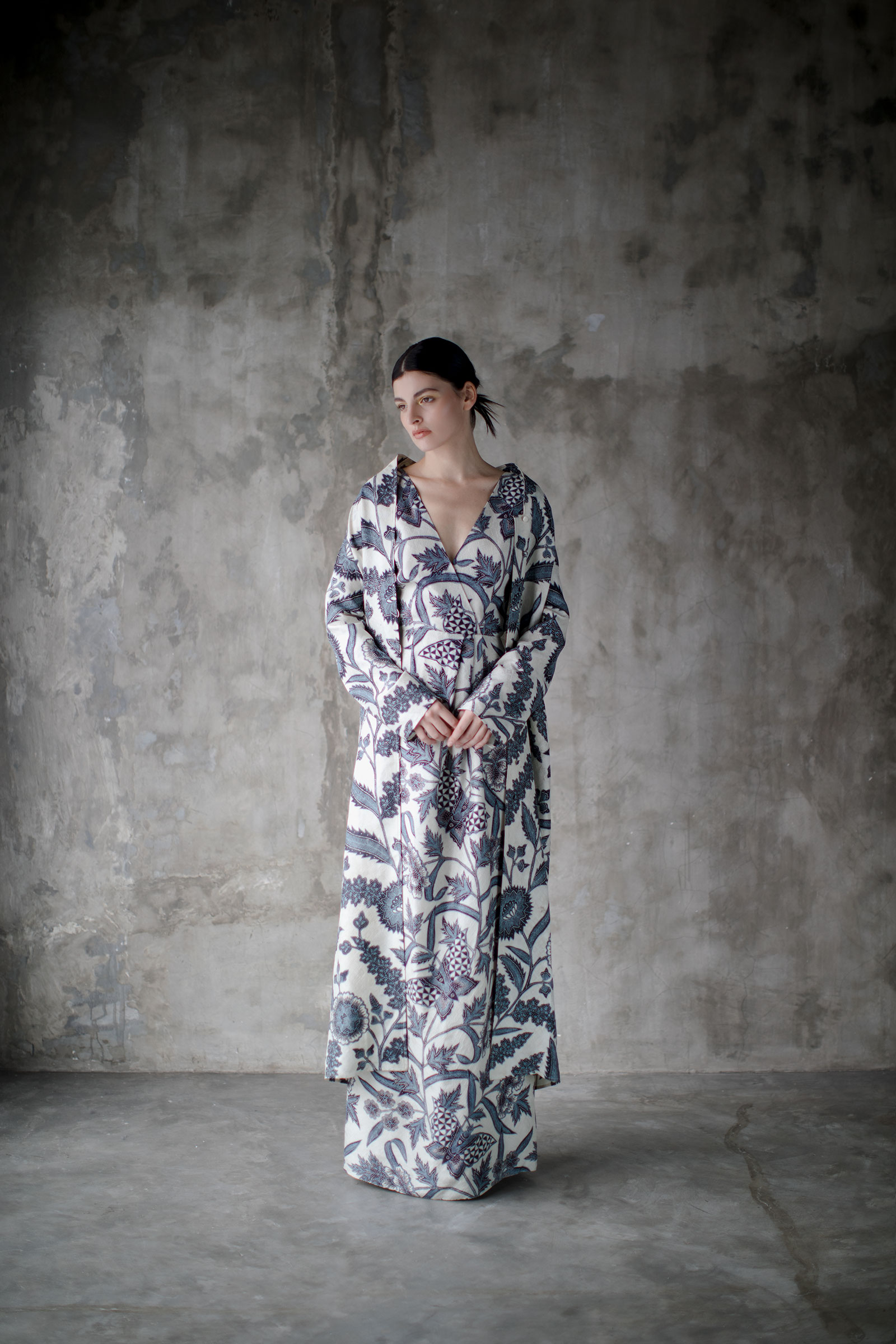An Exclusive Interview with Indonesian fashion designer Auguste Soesastro

The designer tells us about the relationship between architecture and fashion in his sculptural creations, his belief in sustainable practices, and overcoming local challenges
Design Anthology: Why did you decide to launch your own fashion label?
Auguste Soesastro: I was living in New York when the global financial crisis hit in 2008. For almost a year I’d been working as a freelance patternmaker for a few high-end fashion houses, but the crisis really affected the fashion industry. My visa was running out, so I had two choices: work full-time for a fashion house on a relatively low salary, or start my own company. Luckily, my very supportive late father and aunt agreed to finance the venture, and Kraton was born.
Can you describe the Kraton style?
Clean lines, luxurious fabrics and architectural shapes inspired by Indonesian culture, arts and history. I have a wide range of clients of different nationalities, professions and ages — from 17 to 85. The Kraton woman is an intelligent, artistic, confident, no-nonsense type of woman.
You’ve also launched a couple of other labels; can you tell us about those?
Originally Kraton was strictly couture and Kromo (launched in 2012) was my first attempt at entering the ready-to-wear market, without any prior knowledge of the actual set-up required. This line was later consolidated with Kraton as the prêt-à-porter offering. I launched Wastu, which means ‘architecture’ in Javanese Sanskrit, in 2017, in partnership with a large manufacturer. The idea was to democratise my ideas into affordable everyday-wear.
How does your background in architecture influence your fashion designs?
Architecture taught me about the concepts of context, gesture, ergonomics, lifestyle and psychology. I keep these notions in mind when conceptualising clothes, because it’s so easy to get carried away and design for the pure pleasure of aesthetics and one’s own ego.
The basis of any design discipline is ‘form follows function’, yet function without fantasy is extremely boring, and no one pays good money for something boring. The principles of architecture and fashion are more closely related than most people think; both cover the body, albeit on different scales.
What do you enjoy most about the design process?
I’m obsessed with two aspects. Firstly, pattern construction — reducing seams and simplifying designs. The simpler it becomes the harder it becomes, because the design needs to be even more different. The second is finishings — figuring out how to clean off seams and edges to elevate the fabric.
I like working with materials like pure flax linen and cashmere, especially in splittable double weave as the garment becomes completely reversible, unlined and deceptively seamless, the ultimate in understated refinement.
Using sustainable and eco-friendly fashion design practices was and still is the ultimate goal. Since I work with very costly fabrics, it’s sinful to create so much waste. We try to maximise fabric usage in the pattern making, which ultimately becomes a major aspect in the design process, and I keep in mind that our garments need to be made well enough to last for at least a decade.
Do you have any advice for designers or architects who’re considering branching out into fashion?
Enrol in a good fashion course for at least one year, to get a feel of the work required. Dressmaking is a trained skill, or at least it should be, beyond sketching and putting fabrics together. I have seen many people with no fashion knowledge try to enter the industry, only to find out later that it’s a full-time job with its own challenges. Apart from research and development, one needs to deal with the very technical and less creative side of the business, which is the production chain that involves suppliers, manufacturers, quality control, distribution, stock management and so on.
What challenges or advantages have you experienced working as a creative in Indonesia?
It’s very challenging to produce proper high-end ready-to-wear clothing in Indonesia, because the industry hasn’t been set up that way. There’s a handful of custom workrooms producing mostly evening wear, and at the other end of the spectrum there’s mass production in giant factories — everything in-between existed without a standardised system.
In the end, I had to create my own system of production replicating what I learnt in Paris and New York, adjusted to the local customs. In doing so, I became aware of more aspects of the trade and how to build an atelier from scratch.
Can you tell us about your latest fashion collection?
It’s an imaginary journey back to 1960’s Parisian couture via the flash glamour of New York’s Studio 54 in the 80s, while staying true to the architectural forms of the Kraton vocabulary. The collection features an eclectic array of geometric and fantastical patterns, vibrant and neutral colours, exaggerated silhouettes and sleek lines.
As told to / Babette Radclyffe-Thomas
Images / Courtesy of Auguste Soesastro and Davy Linggar













